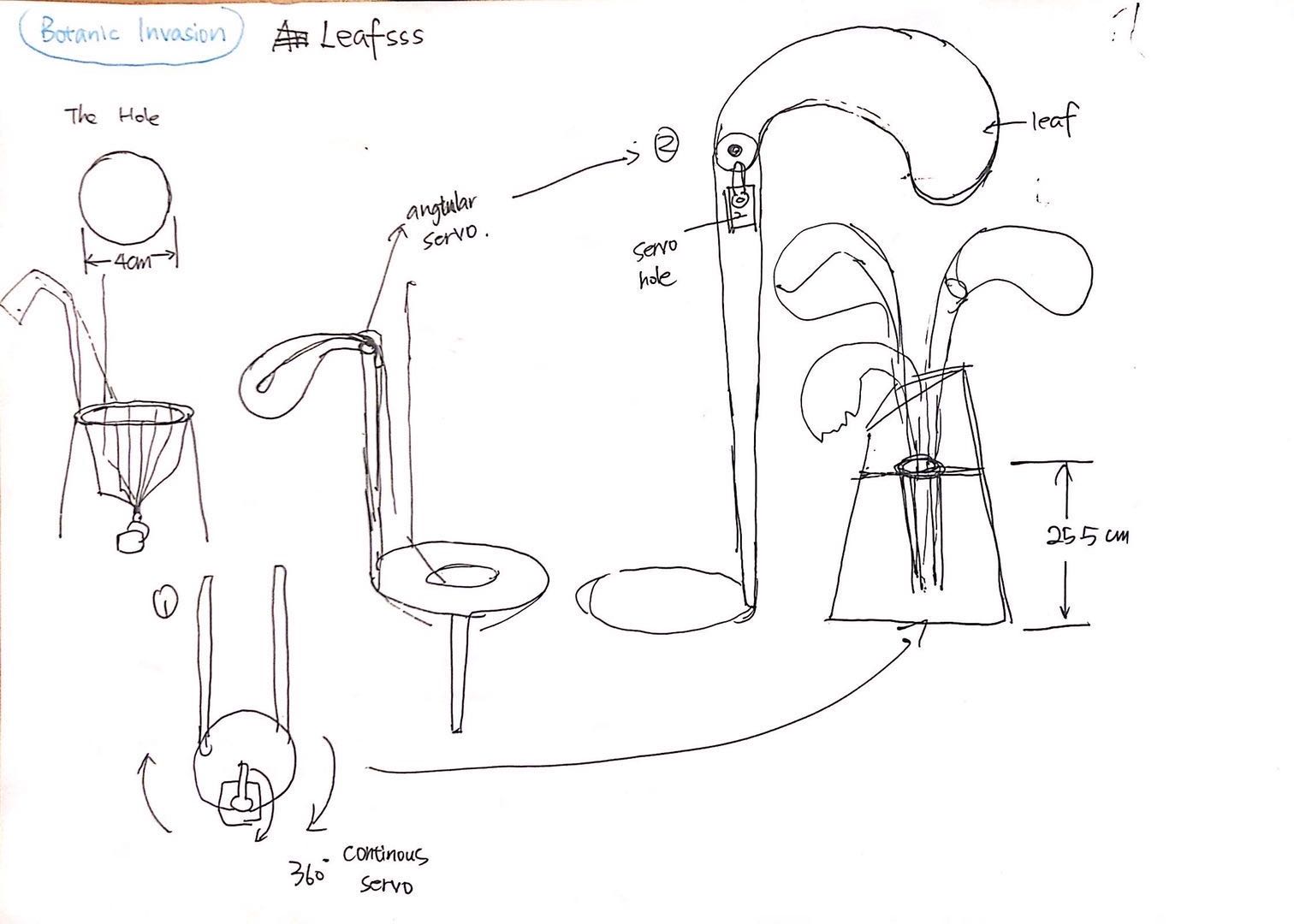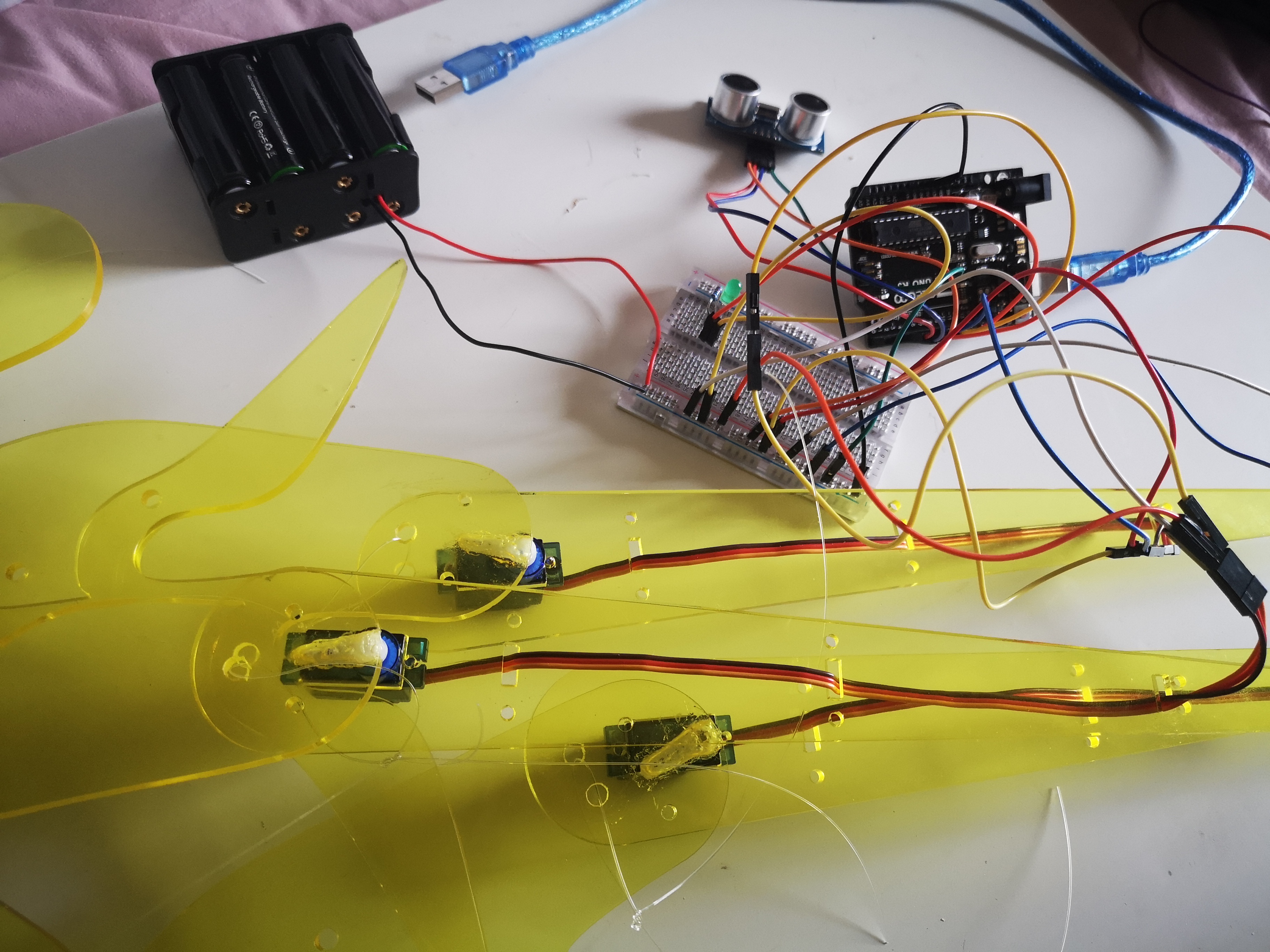AestheticaBot.Leif
AestheticaBot.Leif belongs to the collection AestheticaBot, which is a collection of interactive bots with outstanding aesthetics inspired by imaginary extraterrestrial life forms. It intends to simulate the growing energy of the earthly plantation. However, instead of absorbing light to grow as a normal plant, it “grows” when there are changes within its own distance detection range.(aka. the changes of the field) By growing, it tries to send information signals as blinking and waving. The noise from the servos conveys the clumsiness of a mechanism-based structure, which depicts a crude mechanical aesthetic.
produced by: Yishuai Zhang
Concept
AestheticaBot.Leif is an ultra-sonic sensor based interactive installation. It’s tenacles will react to the field changes around its main body. The closer the distance it detets from other object, the faster the tenacles spin as well as the signal light flashes. The iteraction sequncies are delibrately arranged based on different timeline, giving more depth and subtle details to the whole interactive process.
Design and Execution Process
From sketches to storytelling, prototyping the installation to adjusting specific function and aestehtic, It has been a long and interesting journey to make actual physical stuff. The connection between our reality and virtuel or metaphysical realities tentatively becomes essential in my art practices.
Technical Analysis
List of gadgets:
1. one arduino Uno board
2. three medium LED light bulbs (2.8 - 3.4V) 3. three micro 9g Servos
4. one 9V battery case
5. one ultrasonic sensor
6. scuplture materials : acrylic and woodboard 7. sufficient wires
Further Development
I would like to continue my AestheticaBot collection which already has 3 pieces in it, including Leif. Futher development includes exploring the functionality of wireless communication between each bot. Therefore I will demonstrate some initial approach on how to realise the wireless communication between two EPS32 boards with arduino in the following paragraphs in this blog post. Another possible technique development can also be accessing wireless communication with BLE embedded in the EPS32 board. Last but not least, I also plan to look into how to create an user panel on browsers to realise the interactive behaviors between audience and the bots.
References
1. Evan Raskob. “lesson_sketches_timer_sequence”. physical computing 2 session. 2020.
2.MilliTimer Class
Class Portfolio One :
EPS32 wifiAcessPoint & EPS32 communicate EPS32(in process)
1.Video of EPS32 wifiAcessPoint
using browser to control a LED light.
2.Trying to let two EPS32 board communicate with each other
This is an area that I am beyond interested to tap into. However, with the limitation of certain circumstances such as a super slow and low-secure-level student hall wifi, insuffient time to look deeper into the relevant code, I can not finish this little project as I will. That means there are more things to do for physical computing in the coming summer session.
This is a picture of two EPS32 trying desperately to communicate with each other using one sound sensor and a LED module.
Class Portfolio Two :
I made a control panel using a PS2 joystick to control a camera in another project for Computational Form and Process. The initial idea is to use direct serial communication. But since there are 3 different variables (X, Y, B) that I need to send to openframeworks at each time, I explored a bit about sending multiple variables via serial communication. I set up a callback function in openframeworks to make sure that each time only when the data buffer is filled with 3 different data, the arduino will start to send another set of data again. In the end, it is successfully done. Finally, I made some progress in regard to data communication technique development.
References
1. Rui Santos .Complete project details at https://RandomNerdTutorials.com/esp32-client-server-wi-fi/
2. Elochukwu Ifediora. Arduino examples-EPS32-WIFI-WifiAccessPoint. Created for arduino-esp32 on 04 July, 2018.
3.Tom Igoe.26 Sep 2005. modified by Tom Igoe and Scott Fitzgerald.24 Apr 2012. http://www.arduino.cc/en/Tutorial/SerialCallResponse






































































